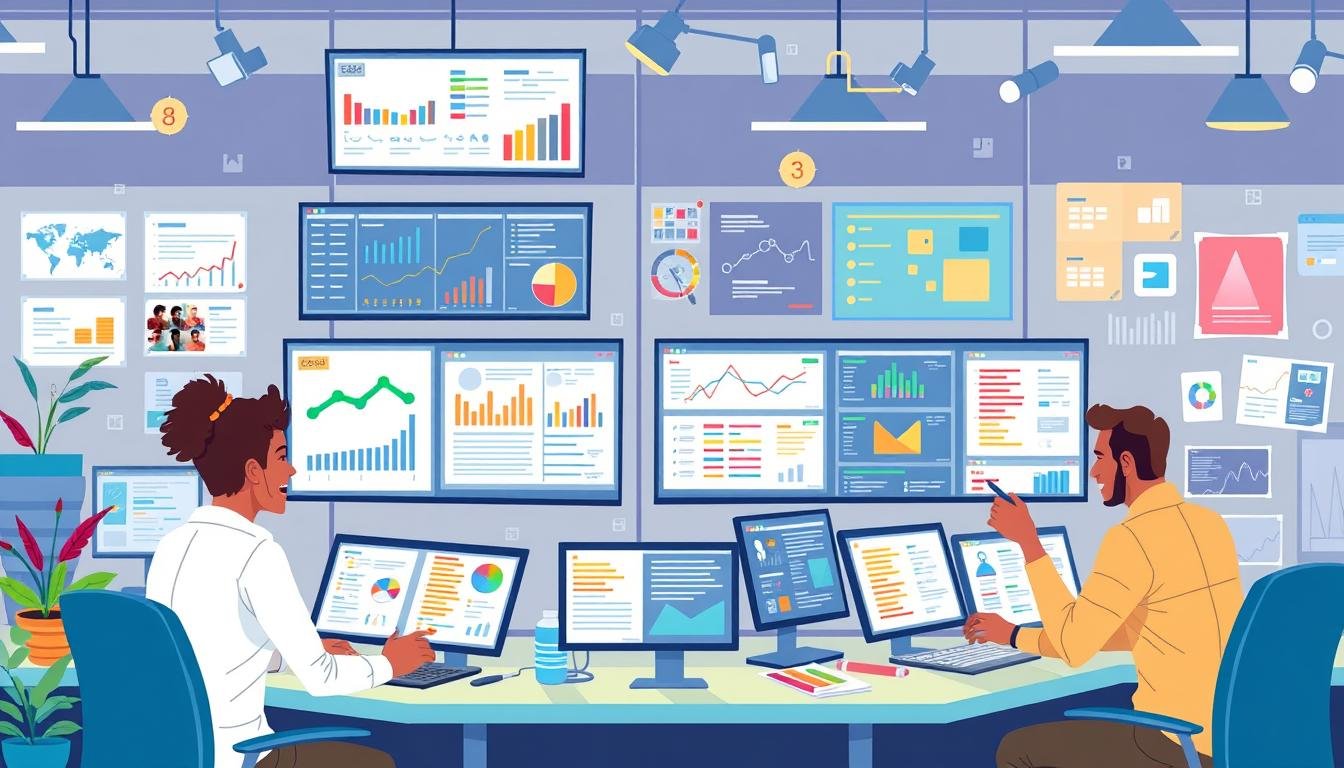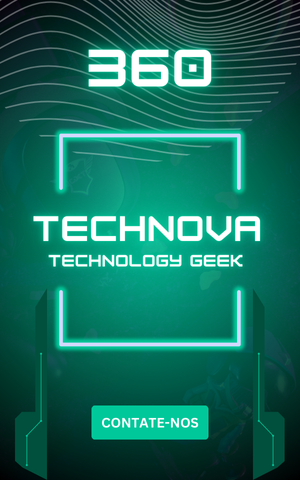A new technology is changing how we do transactions, manage data, and keep our digital stuff safe. This tech is called blockchain. It’s a system that could change many areas, not just for digital money.
Blockchain makes digital deals safe, clear, and quick, without needing middlemen. It uses secret codes and a group agreement to make sure deals are real and can’t be changed. This is creating a new way of trusting each other online, changing how we do business, finance, and even government.
Key Takeaways
- Blockchain is a decentralized and distributed ledger technology that enables secure, transparent, and efficient digital transactions.
- The technology has the potential to revolutionize various industries beyond just cryptocurrency, including finance, supply chain management, and more.
- Blockchain’s key features include decentralization, immutability, and the use of consensus mechanisms to ensure the reliability and trustworthiness of the network.
- Blockchain-based applications, such as smart contracts and decentralized applications, are transforming how we interact with and manage digital assets.
- While blockchain technology faces challenges, such as scalability and regulatory concerns, its innovative potential continues to drive advancements and real-world applications.
Let’s dive into blockchain’s story. We’ll look at where it came from, how it works, and its big impact on our digital lives. From Bitcoin and Ethereum to new uses in many fields, blockchain’s journey is exciting and full of promise.
What is Blockchain Technology?
Blockchain technology is a digital ledger that stores records on a network of computers. It’s secure, open, and can’t be changed easily. Each “block” has data, and they’re linked in a chain. Blockchain is known for being decentralized, immutable, and using cryptography to keep data safe.
Definition and Key Concepts
Blockchain works on a network where many computers keep and check the ledger. This setup means there’s no single boss, making it transparent. Everyone on the network can see the ledger, and data can’t be changed once it’s in the chain.
Decentralization and Immutability
Blockchain is special because it’s not controlled by one person or group. It’s spread out on many computers, making it safe and open. This way, no one can change the records without everyone agreeing.
Blockchain uses special codes to keep data safe. Once data is in the chain, it’s hard to change. This makes blockchain great for places where data needs to be trusted and unchanged.
“Blockchain technology is changing how we handle data and digital deals. Its open and unchangeable nature is making things safer, clearer, and more efficient.”
| Blockchain Network Type | Characteristics |
|---|---|
| Public Blockchain | Anyone can join, with no single boss. |
| Private Blockchain | Run by one group, with access controlled. |
| Permissioned Blockchain | Needs special permission to join, with access by admins. |
| Consortium Blockchain | Kept by several groups, with shared rules. |
The Early Days of Blockchain
The story of blockchain technology starts in the early 1980s. In 1982, David Chaum, a cryptographer, first talked about a chain of blocks secured by cryptography. Later, in 1991, Stuart Haber and W. Scott Stornetta expanded on this idea, writing about their work on a secure chain of blocks.
In 2008, Satoshi Nakamoto, the creator of Bitcoin, published a whitepaper. This paper introduced blockchain as the tech behind Bitcoin, a digital currency system. Bitcoin launched in January 2009.
Hal Finney introduced the RPoW algorithm in 1993. This was a big step in blockchain’s growth. PoW became key for checking transactions on the network.
Since then, blockchain has grown beyond Bitcoin. In 2013, Vitalik Buterin started Ethereum. Ethereum brought smart contracts and DApps to the blockchain world. The industry kept growing, with Hyperledger in 2015 and EOS.IO in 2017.
Today, blockchain is still evolving. “Blockchain 3.0” aims to fix old problems like scalability and security. Projects like Cardano, led by Charles Hoskinson, are leading the way in new blockchain tech.
| Year | Milestone |
|---|---|
| 1982 | Cryptographer David Chaum mentions the idea of a cryptographically secured chain of blocks in his dissertation. |
| 1991 | Stuart Haber and W. Scott Stornetta write about their work on a cryptographically secured chain of blocks. |
| 2004 | The patent for the technology that would become blockchain expires. |
| 2009 | Satoshi Nakamoto mines the first Bitcoin block, marking the beginning of the blockchain era. |
| 2013 | Vitalik Buterin starts the development of Ethereum, a blockchain platform that introduces smart contracts and decentralized applications. |
| 2015 | The Linux Foundation announces the Hyperledger project. |
| 2017 | EOS.IO, a new blockchain system, is introduced. |
How Does Blockchain Work?
Blockchain technology is a game-changer in digital transactions and record-keeping. It’s a digital ledger that spreads across many computers. Each block in the chain holds several transactions. When a new transaction happens, it’s added to every computer’s ledger.
Blocks and the Chain
Blocks and the chain are at the heart of blockchain. Each block holds many transactions. When a new transaction is made, it’s added to every computer’s ledger. The blocks are then linked together using special codes, making the chain unchangeable and secure.
Consensus Mechanisms
Blockchain networks use special rules to agree on transactions and add new blocks. The main rules are Proof of Work (PoW) and Proof of Stake (PoS). In PoW, miners compete to solve hard math problems to earn rewards. In PoS, validators are chosen based on how much cryptocurrency they have to add new blocks.
These rules make blockchain a reliable and open system for digital transactions. It ensures the ledger is secure and trustworthy.
“Blockchain is a digital ledger that duplicates and distributes transactions across the entire network of computer systems on the blockchain.”
Applications of Blockchain Beyond Cryptocurrencies
Blockchain technology is more than just for Bitcoin. It has many uses in finance and banking. For example, it helps with cross-border payments, making international money transfers faster and cheaper. Companies like Ripple are using blockchain to change how we send money worldwide.
Blockchain is also changing how we manage supply chains. It makes it easier to track where products come from and where they go. IBM and Maersk are using blockchain to make supply chains more efficient and secure.
Finance and Banking
In finance and banking, blockchain is making cross-border payments easier. Platforms like Ripple are using blockchain for fast and cheap international money transfers. This is changing the old ways of banking.
Supply Chain Management
Blockchain is also changing supply chain management. It helps track products from start to finish. Companies like IBM and Maersk are using blockchain to make supply chains better and safer.

“Blockchain technology is revolutionizing industries beyond just cryptocurrencies, with transformative applications in finance, banking, and supply chain management.”
The Story of Blockchain: How It’s Revolutionizing Digital Transactions and Beyond
Blockchain technology is changing how we handle digital transactions and data. It’s not just for cryptocurrencies anymore. Now, it’s used in finance, healthcare, real estate, and even voting systems.
Blockchain’s power comes from being decentralized and unchangeable. It creates a secure, open, and shared record. This means we don’t need middlemen, making transactions faster and more trustworthy. It’s making industries better by saving money, working more efficiently, and sparking new ideas.
In real estate, blockchain is making a big difference. It’s making property deals smoother, turning real estate into tokens, and opening up global markets. For example, Dubai is seeing more rental contracts, and Abu Dhabi’s average rents are going up. This shows a strong demand in real estate.
| Blockchain Applications in Real Estate | Benefits |
|---|---|
| Tokenization of real estate assets | Enhances liquidity and accessibility for investors |
| Smart contracts for automated transactions | Reduces human error and improves market efficiency |
| Cross-border real estate investments | Facilitates easier access to international markets |
| Integrating blockchain with AI and IoT | Enables smarter investment decisions and efficient asset management |
As blockchain gets better, its effects will grow. It will change industries, make digital transactions smoother, and improve how we manage data. The future looks bright as blockchain becomes a part of our everyday lives. It will change how we handle digital transactions, data management, and the industries impacted by blockchain transformation.
“Blockchain technology has the potential to revolutionize the way we approach digital transactions and data management across various industries.”
Smart Contracts and Decentralized Applications
Blockchain technology lets us create “smart contracts,” which are self-executing agreements written in code. These contracts automate tasks, cutting out middlemen and making things more efficient. They also enable decentralized applications (dApps) to run on the blockchain, opening up new possibilities.
Smart contracts were first thought of by Nick Szabo in 1994. But it wasn’t until Ethereum came along in 2015 that they became a reality. Now, most DeFi dApps rely on smart contracts to manage things like ownership and NFTs.
Smart contracts aren’t just for crypto. They’re used in healthcare, real estate, and voting systems too. They make supply chains more transparent and speed up complex transactions. This means less paperwork and no need to trust third parties.
But, smart contracts have their downsides. Once they’re out there, you can’t change them. Using real-world data can be risky. There are also issues with scaling, code bugs, and unclear rules.
Despite these challenges, smart contracts and dApps are changing the game. They make things more transparent, automate tasks, and cut out middlemen. This tech is set to change how we do digital transactions and services.
“Smart contracts are the future of digital transactions, automating processes and eliminating the need for intermediaries.”
Challenges and Limitations of Blockchain
Blockchain technology is changing many industries, but it faces big challenges. Scalability and regulatory issues are major hurdles to its use. These problems make it hard for blockchain to be widely accepted.
Scalability Issues
Scalability is a big problem for blockchain. As more transactions happen, the network gets slower. This is known as the “blockchain scalability trilemma.”
It’s a balance between blockchain scalability, transaction speed, and network congestion. To solve this, experts are looking at Layer 2 scaling solutions and other techniques. These aim to make blockchain networks faster and more efficient.
Regulatory Concerns
Blockchain also faces a complex regulatory environment. The lack of clear regulatory frameworks for cryptocurrencies and blockchain-based applications causes regulatory uncertainty. This uncertainty holds back businesses and users from fully embracing blockchain.
Creating regulatory guidelines that balance innovation and compliance is key. This will help blockchain technology grow and be integrated into more areas. Also, following rules like anti-money laundering (AML) and know-your-customer (KYC) is a big challenge for blockchain businesses.
“Blockchain technology has the potential to revolutionize various industries, but it must overcome significant challenges related to scalability and regulatory uncertainty to achieve widespread adoption.”
The Future of Blockchain Technology
Blockchain technology is changing fast, with big promises for the future. Decentralized Finance (DeFi) and Non-Fungible Tokens (NFTs) are leading the way. They bring new solutions to many fields.
Emerging Trends and Innovations
Exciting changes are coming to blockchain. DeFi is making finance more accessible and cheaper. NFTs are changing art, gaming, and entertainment by making digital trading safe and clear.
Blockchain is also merging with AI and IoT. This mix will bring new, efficient solutions to many areas. We’ll see better automation and data security.
Smart contracts, a key part of blockchain, are getting better too. They will make transactions faster, cheaper, and safer. This will help many industries grow.
Blockchain’s secure nature will keep our data safe from hackers. As rules for using blockchain get clearer, it will be used more in finance, healthcare, and more. It will make our world more secure and efficient.
The future of blockchain is full of hope. It will change how we live, work, and interact. Blockchain’s power to transform our digital world is amazing.

Blockchain and Cybersecurity
Blockchain technology is changing how we handle digital transactions and data. It brings decentralization, immutability, and strong cryptography to the table. This makes it a game-changer for keeping our digital stuff safe and our info secure.
Old-school cybersecurity systems have one weak spot, making them easy to hack. But blockchain’s network of nodes spreads out the risk. It also keeps data safe by making it hard to change or delete once it’s in.
Blockchain’s authentication systems are more secure because they’re not controlled by one place. Users can manage their digital identities better. Transactions are also protected with top-notch cryptography, keeping data safe while it’s being moved or stored.
- Blockchain’s decentralized nature eliminates single points of vulnerability, making it much more difficult for hackers to compromise systems.
- Immutability in blockchain ensures data cannot be altered or tampered with, enhancing data integrity and authenticity.
- Transparency in blockchain allows for the open and verifiable recording of data, enhancing trust and accountability in various industries.
- Smart contracts stored and executed on the blockchain automate and secure transactions, reducing the risk of disputes and fraud.
As more people use blockchain for cybersecurity, its impact will grow. It will help with secure identity management, data storage, supply chain tracking, and IoT security. Blockchain is becoming a key player in fighting cyber threats.
| Blockchain-Based Cybersecurity Features | Benefits |
|---|---|
| Decentralized network | Eliminates single points of failure and vulnerability |
| Immutable and tamper-proof records | Enhances data integrity and authenticity |
| Cryptographic security | Ensures secure data transfer and storage |
| Smart contracts | Automate and secure transactions, reducing risks |
By using blockchain, we can enter a new era of better cybersecurity. Data will be safer, transactions more secure, and digital assets more protected. The blockchain revolution is exciting and has a big future in cybersecurity.
Real-World Use Cases and Success Stories
Blockchain technology is changing many industries, not just for cryptocurrencies. It’s making finance, banking, supply chains, healthcare, and real estate better. Companies are using blockchain to make things more transparent, efficient, and secure.
In shipping, blockchain is solving the problem of transparency. A report by Accenture and DHL shows the U.S. shipping industry has over 500,000 logistics companies. Platforms like Xage are making data sharing safe and clear for everyone involved.
In finance, blockchain is making trade finance faster. It cuts down the time to close deals from 10-12 weeks to just one week. It also makes issuing securities quicker and supports new ways to share assets in capital markets. Exchanges are seeing better compliance and more liquidity thanks to blockchain.
Healthcare is also using blockchain, like Novo Nordisk for patient data in big trials. Blockchain helps keep data safe and opens up new ways to make money. It’s also used in media and entertainment for things like event tickets and NFTs.
As more businesses see the value of blockchain, we’ll see more use and new ideas. The future of blockchain looks bright, with companies eager to use these new solutions.
| Industry | Blockchain Use Case | Key Benefits |
|---|---|---|
| Shipping and Logistics | Improving supply chain transparency | Increased visibility, reduced fraud, and streamlined operations |
| Finance and Banking | Streamlining trade finance and capital markets | Faster transactions, reduced costs, and improved compliance |
| Healthcare | Securing patient data in clinical trials | Enhanced data integrity and new revenue models |
| Media and Entertainment | Issuing event tickets and managing artist-fan interactions | Increased transparency, new revenue streams, and fan engagement |
Blockchain’s impact is clear, and as more industries use it, we’ll see more cool uses and success stories. The future of blockchain is very exciting.

“Blockchain technology has the potential to revolutionize the way we do business, from supply chain management to financial transactions and beyond. As more organizations recognize its benefits, we’ll continue to see the adoption and impact of blockchain grow.”
Getting Started with Blockchain
Blockchain technology is growing fast and changing our digital world. It’s key for people and companies to keep up. There are many ways to learn about blockchain, like online courses and training programs. Getting educated in blockchain can help you lead in this new tech.
Blockchain Education and Training
To learn about blockchain, you have many options. Here are some:
- Online courses on sites like Coursera, Udemy, and edX teach about blockchain basics, cryptography, and apps.
- Some universities offer blockchain programs for degrees or certificates, working with tech companies.
- Workshops and bootcamps give you hands-on experience in making blockchain solutions.
Blockchain Certifications
Getting blockchain certifications shows you’re serious about the field. Here are some:
- Certified Blockchain Solutions Architect (CBSA)
- Certified Blockchain Developer (CBD)
- Blockchain Council Certification
- IBM Blockchain Foundation Developer
These certifications cover many blockchain skills, like architecture, development, and management. They’re great for professionals in many fields.
Learning blockchain is more important than ever. By getting educated and certified, you become a valuable part of the blockchain world.
| Certification | Issuing Body | Focus Area |
|---|---|---|
| Certified Blockchain Solutions Architect (CBSA) | Blockchain Council | Blockchain architecture and design |
| Certified Blockchain Developer (CBD) | Blockchain Council | Blockchain development and programming |
| IBM Blockchain Foundation Developer | IBM | IBM Blockchain platform development |
“Blockchain technology is changing the way we think about trust, transparency, and the exchange of value.”
Conclusion
Reflecting on blockchain technology’s journey, I’m amazed by its potential. It started with cryptocurrencies and has changed the game. Now, it’s transforming digital transactions and data management in many industries.
Blockchain’s core values of decentralization, transparency, and immutability have made it popular. It’s used in finance, supply chain, healthcare, and more. Big names like JP Morgan and Mastercard are exploring its use, showing its future impact.
Despite challenges like scalability and regulations, I’m optimistic. Ongoing work and teamwork will overcome these issues. Blockchain’s future looks bright, promising to bring economic benefits and secure digital data for all.






